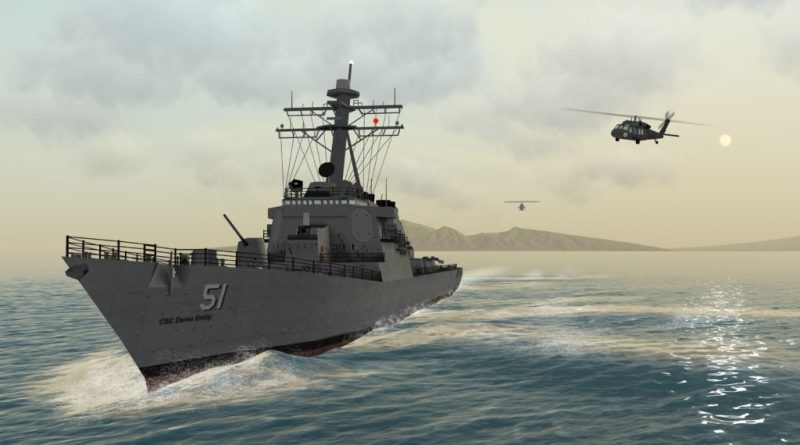Simulation-based training has rapidly evolved from an enticing vision of the future to an advanced response to the challenges faced by modern defence forces.
From the frontline battlegrounds of Ukraine to rising tensions in the Indo-Pacific, it’s apparent that military forces must train smarter, faster, and more cost-effectively for a geopolitical reality that’s both complex and volatile.
For the UK and European defence sector, where budgets are scrutinised and operational readiness is crucial, simulation provides the economic surety of the former, while ensuring the latter.
Why simulation training is essential when preparing modern militaries
Military forces face an ever-complicating balance between budgetary constraints, shifting global tensions, and available space and time to practice for every eventuality.
Fortunately, simulation-based training solutions are no longer novel toys that are simply nice to have; they’ve become strategic linchpins.
This is due to:
- Cost efficiency: Where the cost, or risk, of using real equipment is prohibitive. Simulation delivers 95% training effectiveness at less than 10% of the cost of traditional training.
- Risk mitigation: Allowing pilots, submariners, and infantry to train for high-stakes scenarios without the real risks to health and personal safety (and the equipment itself).
- Tactical adaptability: With AI-driven wargaming now opening the door to even more accurate scenario drills and battle simulations.
- Joint force integration: Enabling the closest, most seamless cooperation with NATO allies across multi-domain operations, from land to space.
Simulation as a tool to assist with training personnel for air, land, and sea missions
In 2021, the US Government Accountability Office (GAO) published a repor t.
It stated that, from 2010 to 2019, there were 3,753 tactical vehicle mishaps – averaging almost one accident every day.
Worse yet, these incidents resulted in the deaths of 123 service members.
It was judged human error was the root cause on 83% of occasions.
Of course, where humans exist, there will be human error.
Simulators won’t make humans perfect, but they will enable the mistakes we learn from to be less risky – and, crucially, non-fatal.
Air forces in the UK and Europe have been utilising flight simulation as an additional element of training pilots for decades.
They train on F-16 simulators with rapid progress, familiarising themselves with the cockpit and learning instrument and emergency response procedures.
ST Engineering Antycip, together with one of its partners, worked with Airbus Defence and Space on a dedicated simulator for Eurofighter Typhoons, key aerial craft for NATO and its member nations.
In collaboration with another partner, Antycip helped to develop a prototype capability concept demonstrator (CCD) for RAF mission training that enabled the F-35 aircraft to interact with military simulators in a synthetic training environment for the first time.
These types of projects assist with accelerating the readiness of pilots for real-world conflicts, making their time in the aircraft really count.
Drone warfare training can be shaped using lessons from conflicts like the Russia-Ukraine war to prepare UAV pilots for the intricacies of their craft, including targeting and working through countermeasures.
This is proving more relevant than ever; in February 2025, Ukraine claimed its 10,000th Russian tank kill through the use of drones.
For land combat, infantry can practice everything from using a weapon to civilian interactions.
With state-of-the-art artificial intelligence (AI), simulations like those used by the British Army incorporating Opposing Force-style tactics allow troops to train against smart, adaptive opponents who ‘think’ and attempt to subvert the trainees.
Naval units use simulations to recreate the complexities of water-based operations, such as the acoustic conditions of the North Atlantic in anti-submarine warfare (without risking the state of art £1bn submarine in the process).
Naval combat can go awry because of emergencies like fires, flooding, and system failures onboard the craft – all of which can be drilled again and again via simulation, until readiness is cemented and responses are instinctual.
How simulation can be a procurement advantage
In the defence sector, a huge barrier has always been the cost of training and equipment.
Simulation not only offers advantages before practising with the equipment itself begins; it transforms the entire procurement process.
Large manufacturers in the sector employ virtual prototyping, using simulation to test vehicle designs before committing to production.
Military customers can also use simulations of the products to ‘try before they buy’, enabling smart investments.
Less wasted time, and educated customers, spreads cost advantages throughout the supply chain – a welcome development for those struggling with aforementioned budgetary constraints and under pressure to find the best solutions.
The role of simulation in helping to futureproof modern forces
One of the best ways to prepare for the future is to learn from the past.
Using simulation, previous missions can be rebuilt and practised as they were – whether that’s to learn from success, or from failure.
Operational procedures can be evaluated and refined in greater detail using the data insights granted by simulation software, running in the background and continually collating numbers.
By incorporating machine learning, simulated opponents can be made unpredictable, training forces not to bank on the familiar and to learn to think on their feet.
Modern forces, as we’ve seen often, are not just fighting on the physical battlefield.
The UK’s recent $500m investment into military tech, aiming to counter cyberwarfare among its top concerns, is one example of how crucial it is to prepare for state actors disrupting networks and the flow of information.
Simulators are already used by the National Cyber Force to practise disrupting adversary networks, learning from the many lessons of what’s happened in Ukraine.
And learning from past lessons is crucial; simulation can not only provide active learning environments, but also review and analyse flight information for enhanced mission debriefing.
Simulation cuts the logistical constraints and the risks of procuring equipment with nowhere to test it, needing only a modest learning environment and a software update where necessary.
Though the battles remain in the real world, training can be carried out to great effect in the virtual—repeatably, with measurable results, and no risk to life.
How ST Engineering Antycip can help with simulation-based training for armed forces
Antycip has been providing bespoke virtual reality and simulation solutions for more than 20 years.
Our customers in the defence sector range across Europe, and they have incorporated the work of some of the most cutting-edge technology leaders in the industry.
From electronic warfare battle labs to attack helicopter simulators, we build across all domains to bring you the missing piece in your training capabilities.
For the UK and Europe, investing in advanced military simulation isn’t merely about cost savings; it’s about winning the next fight before it even begins.
To learn about ST Engineering Antycip and how we can bring you to the forefront of simulation, contact us today.




















